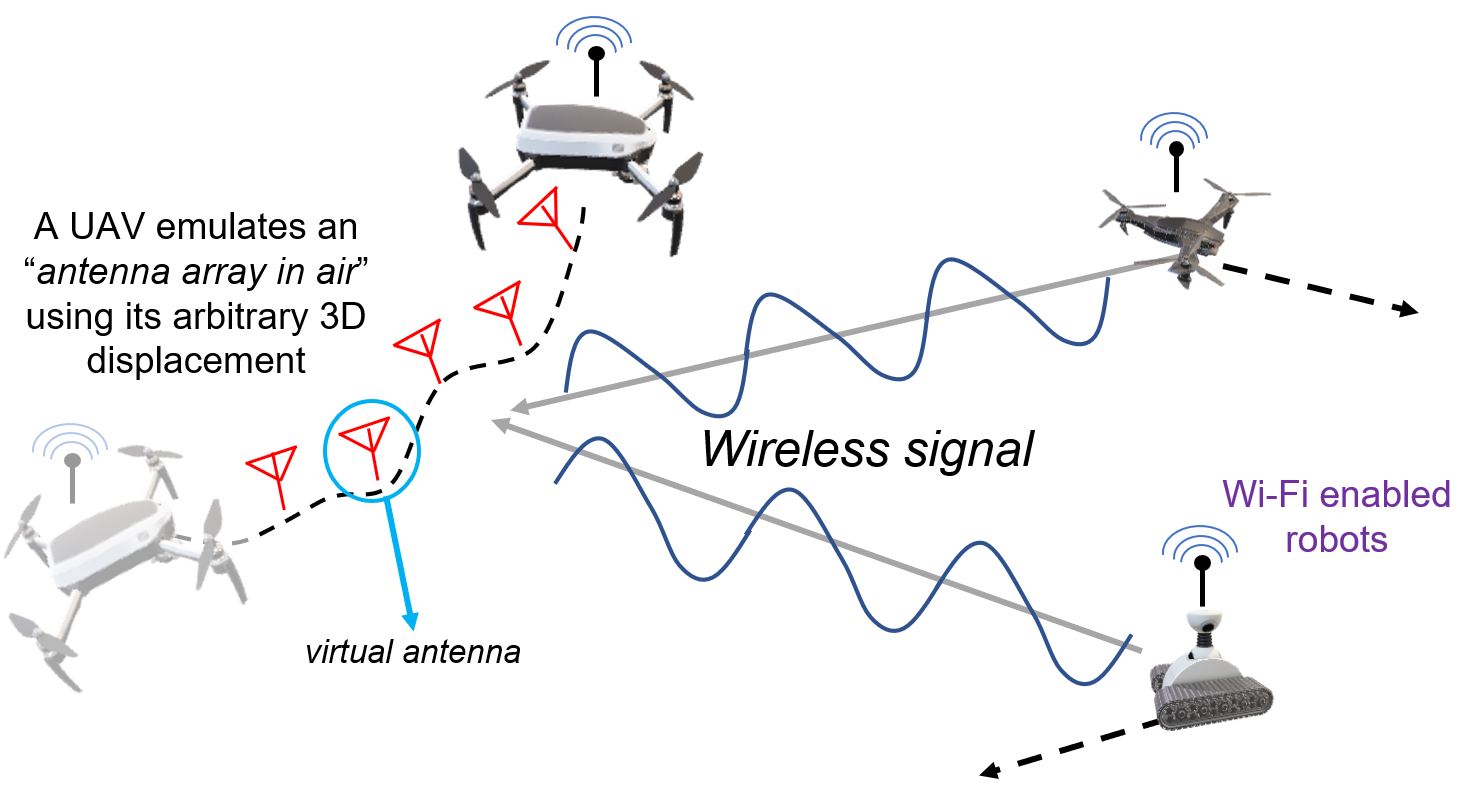Ninad Jadhav, Weiying Wang, Diana Zhang, Oussama Khatib, Swarun Kumar, and Stephanie Gil. 9/26/2022. “
A wireless signal-based sensing framework for robotics.” International Journal of Robotics Research, 2022, Volume 41, Issue 11-12, Pp. 955–992.
Publisher's VersionAbstractIn this paper, we develop the analytical framework for a novel Wireless signal-based Sensing capability for Robotics (WSR) by leveraging robots' mobility in 3D space. It allows robots to primarily measure relative direction, or Angle-of-Arrival (AOA), to other robots, while operating in non-line-of-sight unmapped environments and without requiring external infrastructure. We do so by capturing all of the paths that a wireless signal traverses as it travels from a transmitting to a receiving robot in the team, which we term as an AOA profile. The key intuition behind our approach is to enable a robot to emulate antenna arrays as it moves freely in 2D and 3D space. The small differences in the phase of the wireless signals are thus processed with knowledge of robots' local displacement to obtain the profile, via a method akin to Synthetic Aperture Radar (SAR). The main contribution of this work is the development of i) a framework to accommodate arbitrary 2D and 3D motion, as well as continuous mobility of both signal transmitting and receiving robots, while computing AOA profiles between them and ii) a Cramer-Rao Bound analysis, based on antenna array theory, that provides a lower bound on the variance in AOA estimation as a function of the geometry of robot motion. This is a critical distinction with previous work on SAR-based methods that restrict robot mobility to prescribed motion patterns, do not generalize to the full 3D space, and require transmitting robots to be stationary during data acquisition periods. We show that allowing robots to use their full mobility in 3D space while performing SAR results in more accurate AOA profiles and thus better AOA estimation. We formally characterize this observation as the informativeness of the robots' motion; a computable quantity for which we derive a closed form. All analytical developments are substantiated by extensive simulation and hardware experiments on air/ground robot platforms using 5GHz WiFi. Our experimental results bolster our analytical findings, demonstrating that 3D motion provides enhanced and consistent accuracy, with a total AOA error of less than 10 degree for 95% of trials. We also analytically characterize the impact of displacement estimation errors on the measured AOA, and validate this theory empirically using robot displacements obtained using an off-the-shelf Intel Tracking Camera T265. Finally, we demonstrate the performance of our system on a multi-robot task where a heterogeneous air/ground pair of robots continuously measure AOA profiles over a WiFi link to achieve dynamic rendezvous in an unmapped, 300m2 environment with occlusions.

